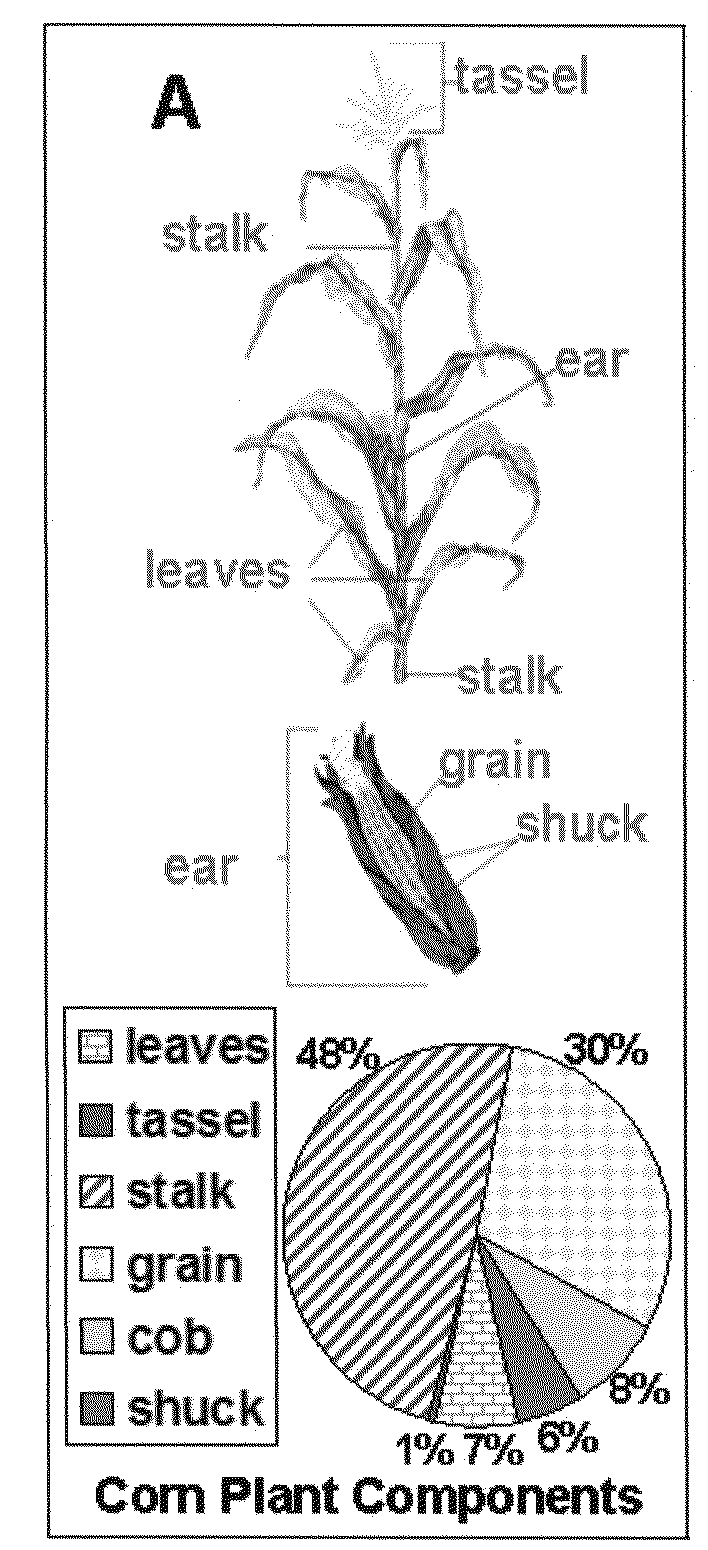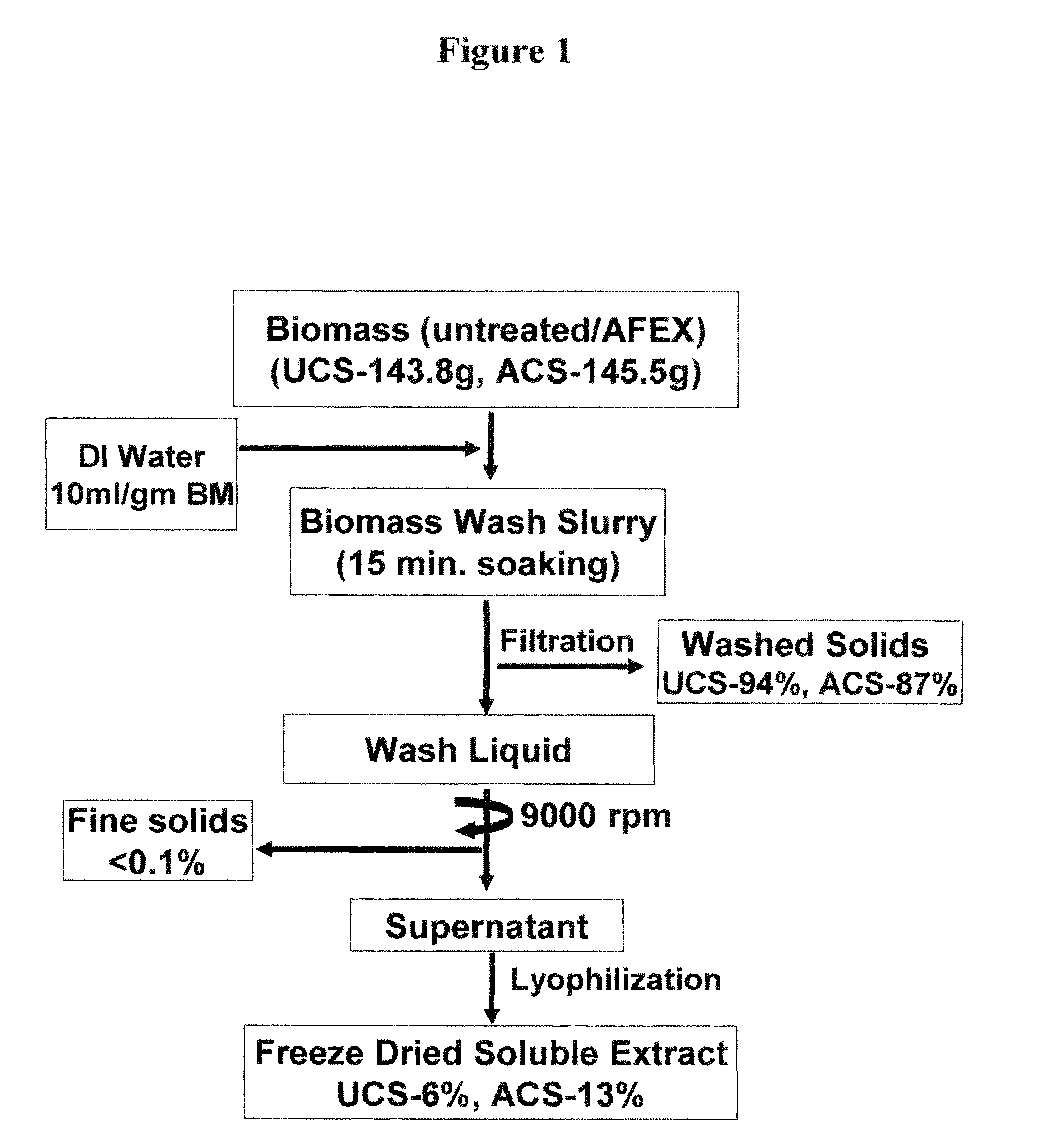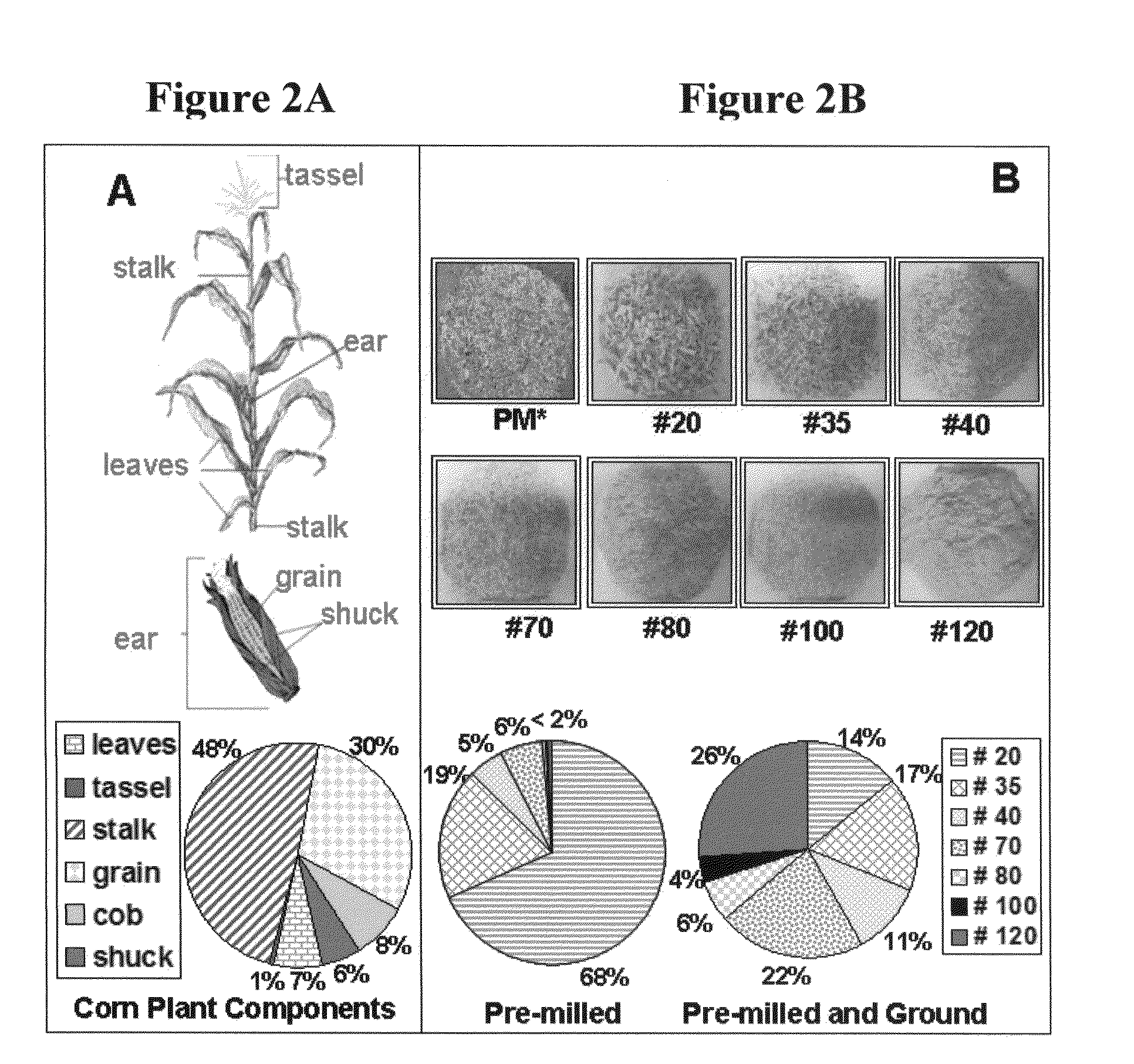Process for enzymatically converting a plant biomass
a technology of enzymatic conversion and plant biomass, which is applied in the direction of fertilization, etc., can solve the problems of large fiber disruption and explosive decompression of biomass, and achieve the effects of reducing particle size, reducing the amount of cellulase, and relieving pressur
- Summary
- Abstract
- Description
- Claims
- Application Information
AI Technical Summary
Benefits of technology
Problems solved by technology
Method used
Image
Examples
example
[0050]Particle size and compositional variance are found to have a substantial influence on ammonia fiber explosion (AFEX) pretreatment and enzymatic hydrolysis of lignocellulosic biomass. Corn stover was milled and fractionated into particle sizes of varying composition. The larger particle size fractions (rich in corn cob and stalk portions) were found to be more recalcitrant to hydrolysis compared to the smaller size fractions (rich in leaves and husk portion). Electron spectroscopy for chemical analysis (ESCA) and Fourier transform infrared spectroscopy (FTIR) were used for biomass surface and bulk compositional analysis respectively. The ESCA results showed a 15-30% decrease in the O / C (oxygen to carbon) ratio after the pretreatment indicating an increase in the hydrophobic nature of biomass surface. FTIR results confirmed cleavage of the lignin-carbohydrate complex for the AFEX treated fractions. The spectroscopic results indicate the extraction of cleaved lignin phenolic frag...
PUM
 Login to View More
Login to View More Abstract
Description
Claims
Application Information
 Login to View More
Login to View More - R&D
- Intellectual Property
- Life Sciences
- Materials
- Tech Scout
- Unparalleled Data Quality
- Higher Quality Content
- 60% Fewer Hallucinations
Browse by: Latest US Patents, China's latest patents, Technical Efficacy Thesaurus, Application Domain, Technology Topic, Popular Technical Reports.
© 2025 PatSnap. All rights reserved.Legal|Privacy policy|Modern Slavery Act Transparency Statement|Sitemap|About US| Contact US: help@patsnap.com



